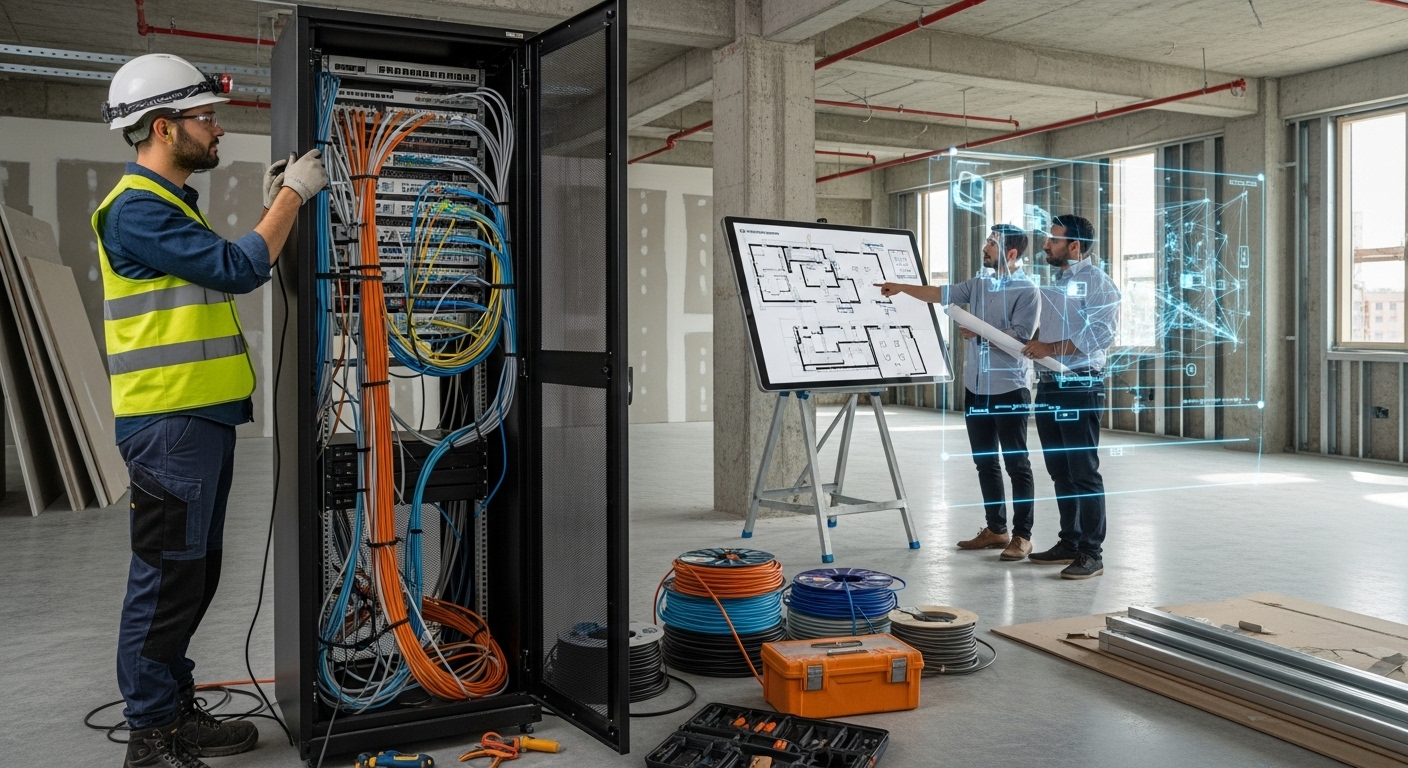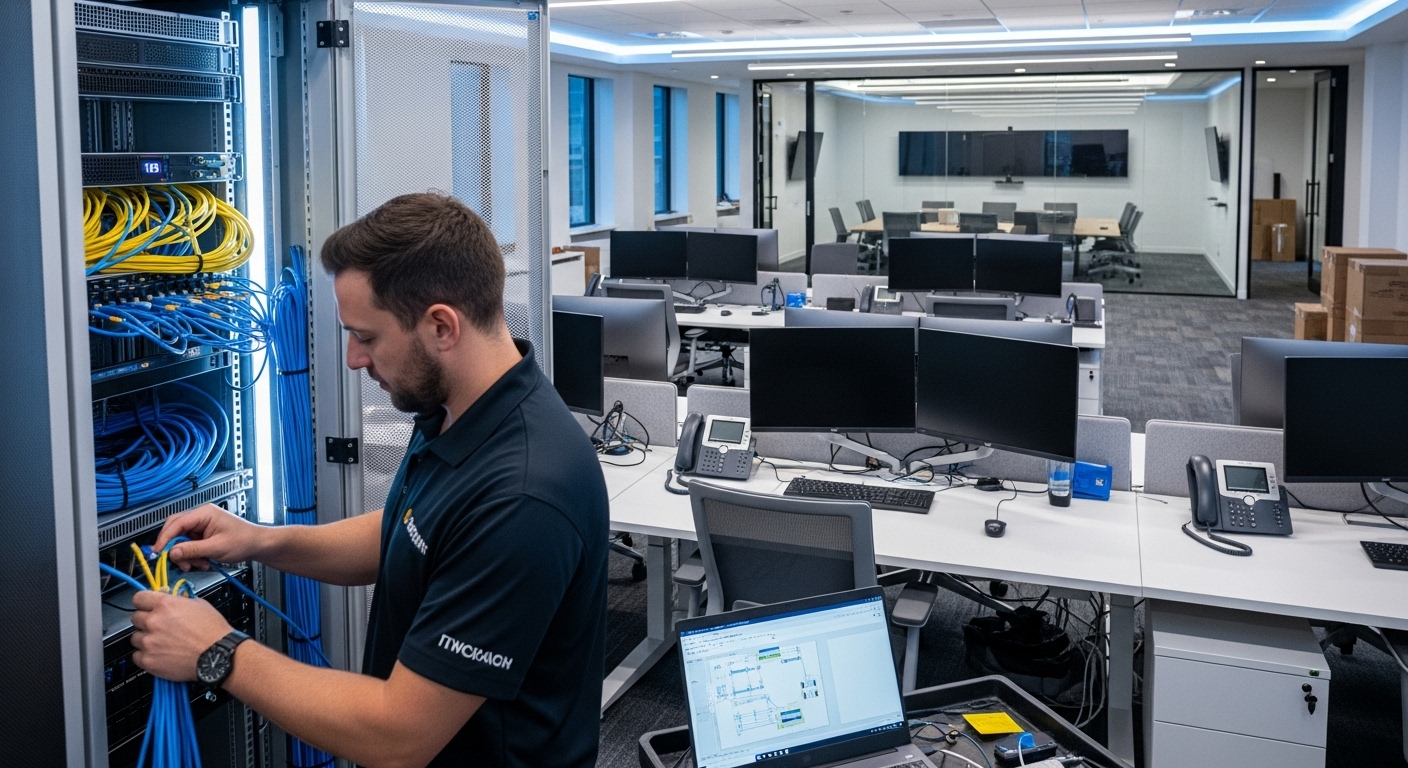In an era where company culture and brand identity are paramount, the physical workspace has evolved far beyond a mere container for desks and chairs. It is now a strategic asset, a powerful medium for storytelling, and a critical factor in attracting and retaining top talent. Moving past the superficial application of logos, modern space branding is about creating a multi-sensory experience that embodies a company’s core values and vision. Recent trends show a definitive shift towards human-centric and sustainable designs, transforming offices into environments that not only support productivity but also foster well-being and a deep sense of connection to the brand’s mission. This guide explores how to develop a unique ‘spatial signature’—a physical environment that authentically communicates your brand’s identity and drives cultural and business success.
Defining your spatial signature: beyond logos and paint
A spatial signature is the unique, tangible expression of a brand’s identity within a physical environment. It transcends interior decoration; it is a holistic discipline known as environmental branding. This practice involves strategically infusing a company’s ethos, values, and narrative into the very architecture and design of its space. Forget simply painting a wall in your brand’s primary color or placing a logo in the reception area. True environmental branding is about creating an immersive experience. It considers how employees, clients, and visitors feel and interact within the space. Does the layout encourage the level of collaboration your culture prizes? Do the materials and textures reflect your commitment to sustainability or luxury? Does the flow of the office tell a story about your company’s journey and future aspirations? Every element, from the quality of light to the acoustic design, becomes a tool for communication, reinforcing the brand’s personality at every turn and creating a cohesive, memorable, and authentic experience that resonates on a deeper level than any marketing slogan ever could.
The foundation of design: aligning space with company culture
Before selecting a single piece of furniture, the foundational step in branding a space is a deep and honest audit of your company culture. The most successful branded environments are those that are a genuine reflection of the people and values within. A vibrant, game-filled lounge might be perfect for a playful tech startup but could feel discordant for a formal financial institution. The key is authenticity. Begin by defining your cultural cornerstones. Are you built on principles of flat hierarchy and open communication? An open-plan layout with accessible leadership desks and numerous huddle spaces would support this. If deep, focused work is critical, the design must incorporate quiet zones, private pods, and acoustic paneling. A culture that prioritizes employee well-being should be mirrored with biophilic elements like living walls, abundant natural light, and dedicated wellness rooms. The goal is to translate abstract values into tangible design choices. This alignment ensures the workspace not only looks the part but also functions as an incubator for the desired culture, actively encouraging the behaviors and interactions that define your organization and making the physical space a true partner in building a strong, cohesive team.
Key elements of environmental branding
Crafting a compelling spatial signature involves orchestrating several key design elements. Color psychology is a potent tool; strategic use of your brand palette can evoke specific emotions, using energizing hues in collaborative zones and calming tones in areas for concentration. Materials and textures are equally important, speaking volumes about your brand’s character—reclaimed wood and exposed concrete might suggest innovation and sustainability, while polished marble and brass could convey tradition and prestige. Lighting is critical for both function and mood; a mix of natural, ambient, and task lighting creates a dynamic and comfortable environment. Technology integration must be seamless and purposeful. This includes not just essential tools for hybrid meetings but also interactive digital displays that can share company news, celebrate successes, or tell the brand’s story in an engaging way. Finally, acoustics are often overlooked but are vital for productivity and employee comfort. Thoughtful acoustic design minimizes distractions in open areas and ensures privacy where needed, demonstrating a commitment to a functional, human-centric workplace. These elements, when thoughtfully combined, create a rich, multi-layered environment that communicates brand identity far more effectively than words alone.
Narrative by design: telling your brand story
Your workspace is a three-dimensional canvas for your brand’s narrative. Every company has a unique story—its origin, its mission, its milestones, and its vision for the future—and the physical environment provides a powerful opportunity to tell it. This can be achieved through a variety of creative installations. A timeline graphic along a main corridor can beautifully illustrate the company’s journey from its founding to the present day. Wall murals can depict core values in an abstract or literal way, creating memorable focal points and ‘Instagrammable’ moments that employees and visitors are proud to share. Naming meeting rooms after significant projects, company heroes, or key locations in the brand’s history adds another layer of meaning and reinforces a shared sense of purpose. Even the selection of art and photography can be curated to reflect the company’s industry, community, or global reach. By weaving these narrative elements into the design, the office transforms from a generic workplace into a meaningful destination, a living museum of the brand that constantly reminds employees why their work matters and gives clients a compelling insight into who you are as an organization.
The rise of the sustainable and biophilic workspace
A significant trend in modern workspace design is the dual focus on sustainability and biophilia—the integration of nature into the built environment. This isn’t just about being eco-conscious; it’s a powerful branding statement that signals a company’s commitment to corporate responsibility and the well-being of its people. A sustainable approach can be manifested through the use of recycled or locally sourced materials, energy-efficient lighting and HVAC systems, and waste reduction programs. These choices not only lower the office’s carbon footprint but also tell a story of a forward-thinking, responsible brand. Biophilic design complements this ethos by connecting employees with nature. Features like living walls, indoor plants, water features, and maximizing natural light have been shown to reduce stress, boost creativity, and improve cognitive function. A study from the University of Exeter even found that employees in offices with plants were 15% more productive. By creating a green and healthy environment, you are branding your space as a place that nurtures its inhabitants, reflecting a culture of care and enhancing the overall employee experience.
Measuring the return: the tangible and intangible value of a branded space
Investing in a strategically branded workspace is not an exercise in vanity; it delivers measurable returns. The most direct ROI can be seen in talent acquisition and retention. A compelling office environment is a significant differentiator in a competitive job market, helping to attract top candidates and reduce costly employee turnover. Furthermore, a well-designed space directly impacts productivity and engagement. When the environment is aligned with work styles and cultural values, employees are more satisfied, motivated, and effective. There are also tangible operational savings to be gained from sustainable design, such as reduced energy and water consumption. Beyond these quantitative metrics, the intangible value is immense. A thoughtfully branded space makes a powerful first impression on clients and partners, reinforcing professionalism and brand credibility. It becomes a physical testament to the company’s success and values. By conducting pre- and post-design surveys on employee satisfaction and tracking metrics like retention rates and productivity, companies can build a strong business case for investing in their physical environment as a critical driver of success.
In conclusion, branding your space is a strategic imperative in today’s business landscape. It’s an investment that pays dividends in culture, talent, and brand equity. By moving beyond simple aesthetics to create a spatial signature, you are building more than just an office; you are crafting a destination that reflects your values, tells your story, and empowers your people to do their best work. The physical environment is the most powerful, persistent, and immersive tool a company has to communicate who it is and what it stands for. When your space speaks your brand, it resonates with everyone who walks through the door, creating a lasting impact and a solid foundation for future growth.





